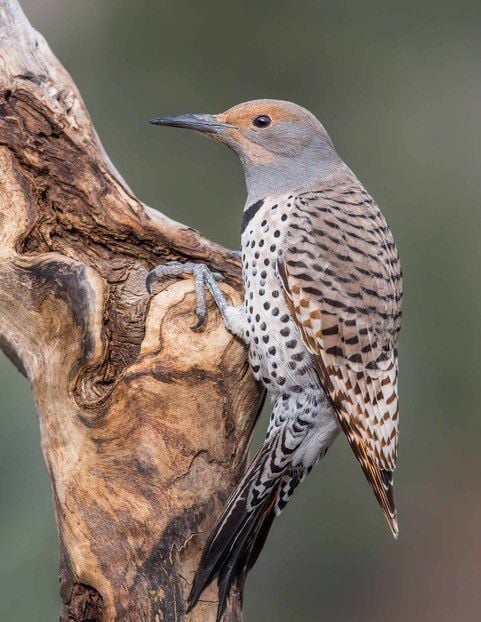

Often found in wooded areas, you will see Northern Flickers among the tree line or moving about on the ground. They are one of the few members of the woodpecker family that migrate. The Northern Flicker, native to North America and parts of Central America, Cuba, and the Cayman Islands, is a medium-sized member of the woodpecker family. This bird is the flicker and may be visiting a feeder near you! These birds are almost as big as some feeders, and have a long bill and tongue, similar to a hummingbird. In fact the length and speed of the drumming, as well as its intensity can be used to identify different species.There has been some buzz about a new bird frequenting hummingbird feeders. Rather than sing songs like many birds, woodpeckers tap their bills rapidly against trees, logs, or posts (and sometimes even house siding or drainpipes, much too many home-owners' annoyance) to attract mates and proclaim territory. However there is some recent controversy recently whether these species still exist, particularly the Ivory-billed Woodpecker, which some researchers believe has been filmed in the swamps of Alabama.

The Ivory-billed Woodpecker and the Imperial Woodpecker have been considered extinct for 30 years. Many of the Picidae family of birds are considered endangered or threatened due to habitat loss. Most feed and live in trees, except for the flickers which have evolved a terrestrial lifestyle of feeding mainly on termites or ants, and are quite comfortable on the ground, using trees mainly as a refuge and nesting area. While there are exceptions, such as the Acorn Woodpeckers who live in social communities, most woodpeckers live alone or in pairs. Most woodpeckers in North America are arboreal birds of wooded habitats but there are some species like the Gila Woodpecker that live in deserts and use cacti for nesting.Ī few woodpeckers seasonally leave the northern high elevations of their nesting range while others are "irruptive" species, like some hawks and owls, which will move hundreds or thousands of miles based on their food supply. Males and females often appear similar but the males commonly have more prominent red or yellow head markings. Many woodpecker species exhibit patches of red and yellow on their heads and bellies, and these bright areas play a role in signaling. Unlike other birds woodpeckers have long prehensile tongues with barbed or sticky tips which can probe ants' nests or tunnels made by boring insects.īlack, white, and various shades of gray and brown dominate the colors most commonly found in woodpecker plumage, with green also being seen on some species outside North America. Their strong feet and stiff tail allow them to form a "tripod" which is a very stable stance. The basic body of the woodpecker is comprised of a chisel-like bill used to peel bark or evacuate wood to access insects, and a stiff tail used to prop the bird as it clings to vertical surfaces such as trees or posts. Woodpeckers are known mainly for their pecking and drumming on trees and posts, sapsuckers for their feeding on both tree sap as well as the insects they find caught in it, and flickers for being rather large and commonly hunting for ants on the ground. The most well known of these are commonly grouped under the names woodpeckers, sapsuckers, and flickers. The woodpecker family, Picidae (pronounced PIH-kih-dee) is made up of two hundred twenty-two species grouped into twenty-eight genera.įifty-seven species of woodpeckers, grouped into fourteen genera, are found in North America. The taxonomic order PICIFORMES (pronounced pih-kih-FOR-meez) is divided into seven different families which include the colorful toucans, the insect-catching jacamars, puffbirds, honeyguides, barbets, and woodpeckers.


 0 kommentar(er)
0 kommentar(er)
